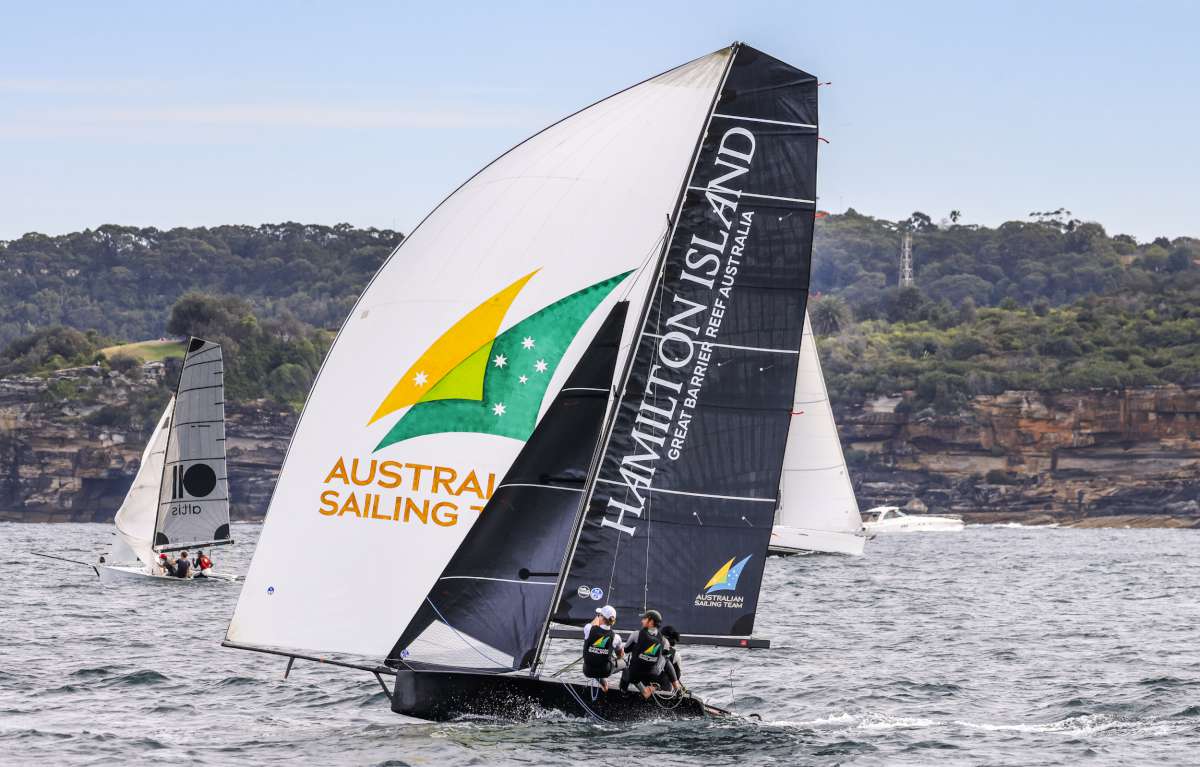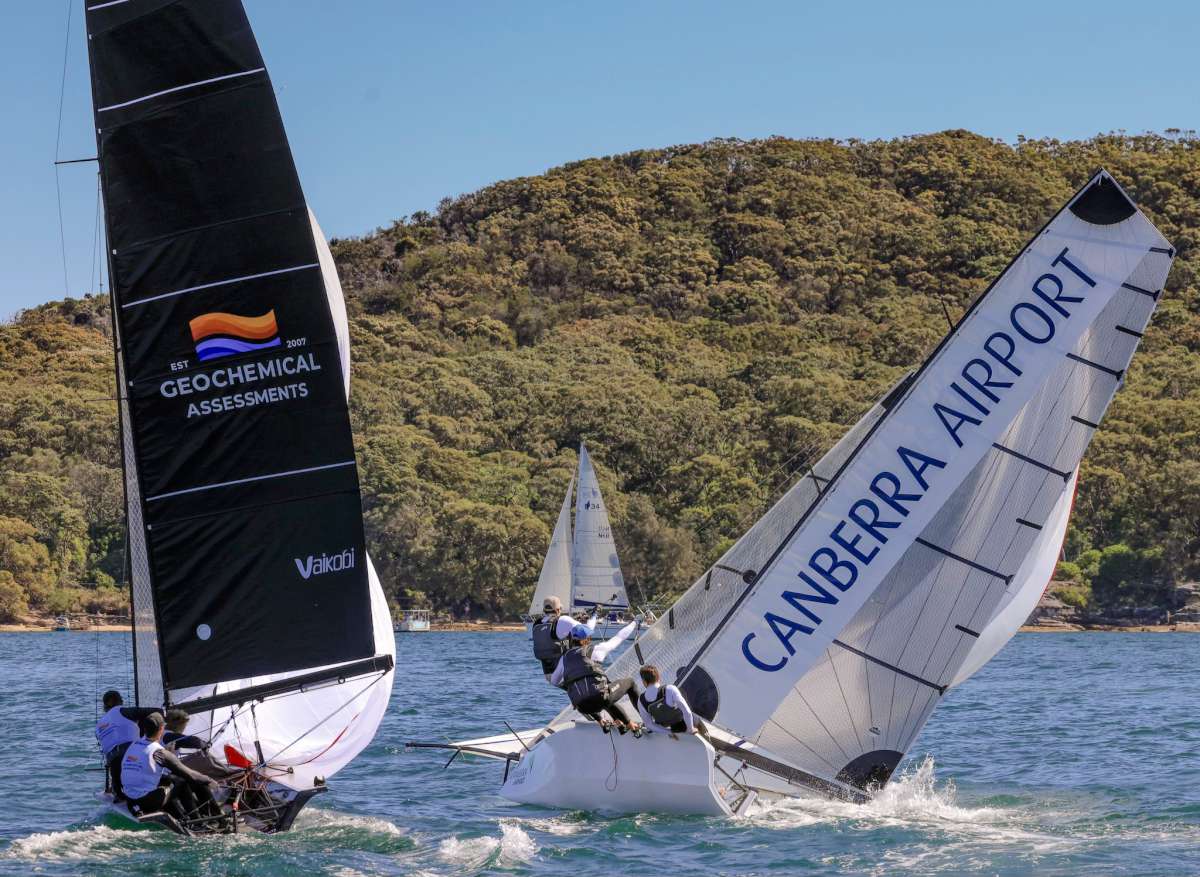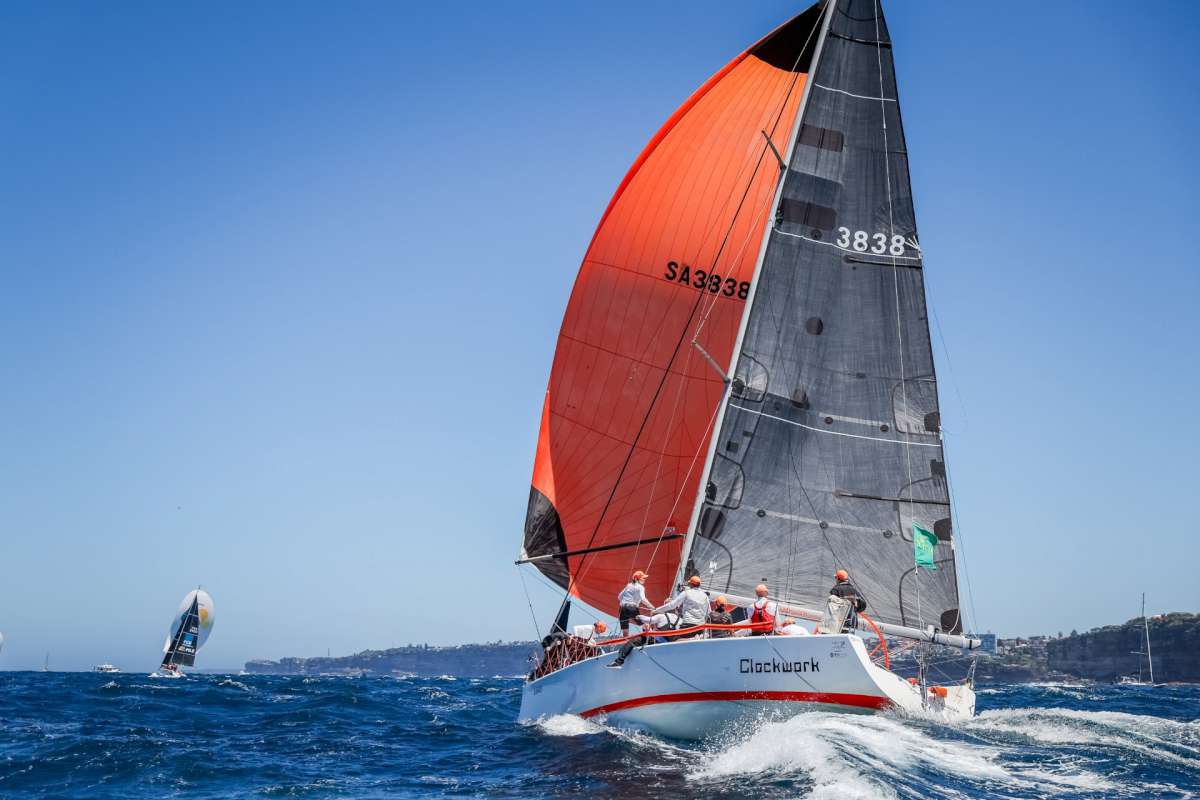PRACTICALITIES BY ANDREW BRAY
Navigation lamps
Boat lighting is moving beyond the purely functional, with lifestyle convenience and pleasurable aesthetics becoming an achievable consideration on boats that are by no means in the superyacht class.
You only have to scan the shelves of your local chandlery to confirm that LEDs are progressively replacing incandescents in navigation and cabin lighting fixtures. But this isn't the only revolution under way.
Light emitting diodes, commonly called LEDs, are used in most electronic devices nowadays. They form the numbers on digital clocks, transmit information from remote controls, light up watches and indicate when appliances are turned on. Collected together, they can form images on a jumbo television screen or illuminate a traffic light or nav light. Their advantages include not burning out like ordinary filaments, being more heat-efficient and having a longer life.
Up until only five years ago, many LED applications were still in the realms of DIY electronics, but much has changed. More powerful LEDs have spurred the development of chips designed specifically for powering and controlling them, and the LEDs themselves are available in surface mount and multi-die forms that better suit mass production. Competition is reducing the price and increasing the range of LED-based bulbs and fittings, and they are now built into many high quality products. Box 1 provides some technical background.
There are two LED approaches to producing the red and green needed for port and starboard navigation lamps. LEDs emitting red and green colours respectively can be shone through clear lenses, or a white or coloured source through a coloured lens.
A white source behind a coloured lens is less efficient, but is the usual approach when retrofitting LEDs to replace incandescents in existing side-light or masthead tri-light fittings. The power savings are still very significant – drop in replacements for 25 Watt festoon incandescents may draw just 3 Watts. The replacements are generally bulkier than the originals, but LED bulbs are available to suit most 120 degree and 360 degree fittings (including some designed for smaller halogen bulbs). They usually come from third party sources rather than original fitting manufacturer (eg www.bebi-electronics.com). One advantage to using drop-ins is that a spare can be carried and user installed. A disadvantage is that the effective visibility range of the lamp/LED bulb combination hasn't been tested, and that because the fitting may leak, the bulb itself must be waterproof.
Various manufacturers now offer externally sealed navigation lamps with clear or coloured lenses containing arrays of LEDs mounted on circuit boards together with some form of regulating electronics. They are usually designed to operate over a range of voltages beginning well below 12V, so navigation lamps will continue to shine brightly even if the yacht's batteries are getting low on charge. The units are sealed for life, which is good for durability, but means the whole fitting must be replaced if something inside fails – the power supply regulator more probably than the LEDs themselves. While early failure is unlikely, even LEDs are not immortal, and any fitting can be accidentally smashed, so some form of back-up should definitely be carried. Emergency nav light kits designed for dry cell batteries are readily available, and guard against any on-board electrical failure, not just the bulb. Another option may be a LED tri-light fittings containing its own replaceable batteries, which might also be used in the tender. (eg those available from www.intelightsports.com). Many LED navigation lamps are now rated for two miles, making them suitable for use on most leisure yachts, and there are even some rated at three miles, such as the LopoLight (www.lopolight.dk) that are suitable for some lights on vessels over 50m. While LEDs are durable, it's worth remembering that many plastics are not, and that cheaper housings and lenses may degrade long before their LEDs dim.
Spreader lights
Spreader lights need to be bright, but are not generally switched on for very long, so power saving is probably not a significant issue. But as with masthead and steaming lamps, replacing spreader lamp bulbs at sea is often impractical, and even in port not everyone relishes a trip aloft, so the durability of LEDs is a benefit. This application suits the relatively directional beams of high power LEDs from manufacturer Mast lights, for example (www.mastproducts.com), which offer a waterproof “Multi-Light” spreader light containing three 1-Watt LEDs.
Courtesy lights intended for stairways are also useful on boats – even one small red LED per step can be effective, but white or coloured LED courtesy lamps are also ideal for mounting within toe-rails or cabin sides so visitors in port don't stub their toes on the deck tracks.
Auto day/night
One of the advantages of LEDs is that they are readily controlled by low power, low voltage solid state electronics. One early and useful application of this is anchor lights that automatically turn on at dusk and off at dawn. Some products have the light detection and switching circuit inbuilt, but there are also stand-alone sensor/switches that can be retrofitted to control an existing anchor light, or at least to remind the crew that it was time to switch on anchor or navigation lamps. Of course this is only the tip of the iceberg, especially when other sensors are introduced. Navigation lamps might also be automated, taking into account whether the boat was moving (perhaps based on GPS), and whether engine was running (and in gear) or not.
Cabin lighting
The conical output of LEDs is ideal for task lighting such as reading lamps over bunks and chart tables, and LED cluster bulbs are commonly available as drop-in replacements for incandescent and halogen bulbs. While LED efficiency may be no better than halogens, the fact that they run cool is a bonus in warm climates, and halogens are not available in powers below about five Watts, so most cabin lighting is either over-bright, or uses smaller incandescent bulbs, which are of course relatively inefficient. The directionality of individual LEDs makes them less suitable for area lighting, even when arranged in flat arrays, but manufacturers are beginning to market dome and flush fittings designed to distribute the light from each LED, rather than just rely on a generalised diffuser.
Not all skippers, however, need to be concerned about minimising power consumption, with many larger yachts using 12V halogen downlights or even domestic AC lighting products below decks.
Night vision
Night vision takes 10 minutes or more to reach full sensitivity, but is destroyed by even brief bursts of brighter light. Low intensity red lighting has long been used in boat navigation areas to help preserve night vision, but is relatively uncommon elsewhere. Hella in particular now offers a range of flush and surface-mount LED-based red “courtesy” lights that are well-sealed and suit both cockpit and cabin applications, so watchkeepers coming below to make a cuppa, for example, can preserve their night vision.
The smallness of LEDs make it practical to incorporate both red and white sources in the one fitting, as is done in the Frensch brand of chart table lamp, for example (www.frensch.de). I'm not aware of any general cabin lighting that offers red/white switching, so there's still some scope for DIY!
Dimming
Dimmability is a useful feature for interior lighting to increase the cosiness of an area or allow other light sources such as video screens, candles, oil lamps etc to be better appreciated. Ordinary fluorescents are difficult to dim successfully, but cold cathode fluorescents are usually dimmable, and simple variable resistor dimming works with halogens, and with resistively limited LED systems. However, LEDs and fluorescents dim without the mellowing colour change that occurs when incandescents and halogens are dimmed.
Most white LEDs are manufactured by coating blue LEDs with phosphors that absorb the blue and re-emit the energy as a mixture of colours which we perceive as white. As with fluorescent lights, the apparent “temperature” of the white depends on the mix of phosphors in the coating. LEDs (and fluorescents) designed to better mimic the yellowy light of incandescents are available, such as the “SensiBulb”(www.sailorssolutions.com) which is also dimmable.
f desired though, a range of colours can be produced, on a permanent, dimmable, or varying basis, by controlling the relative brightness of red, blue and green LEDs within one light fitting (or indeed within the one “tri-colour” LED), or by having white LEDS of different colour temperatures. This requires good diffusers, and considerably more sophisticated electronics, but this too is becoming available.
Digital control systems
Remote control of lighting, air conditioning, security and other systems is becoming relatively common in houses and similar low voltage digital systems are also available for boats. Some are essentially just wireless or infra-red remote controls (handheld or fixed keypads) for specific circuits, such as dimming the cabin lighting, raising a concealed entertainment screen, or adjusting the air-conditioning (eg www.rakocontrols.com). With some such systems, the functions activated by a particular button are reprogrammable, but there are also systems where a range of gear including lighting is controlled via a network. Some of these are CAN networks (Controller Area Network which is a high-integrity serial data communications bus for real-time control applications). They have power controllers distributed around the network (eg www.empirbus.com), so any function is able to be monitored and controlled from elsewhere via the network. Another approach is to network just the control keypads, but have one or more centralised power controllers with sub circuits to the individual pieces of equipment. (eg www.dnagroup.com and moritzaero.com). There are even systems that use fibre optics rather than electrical cables (www.rgm-isis.com). EmpireBus is now an “open” network protocol, encouraging other manufacturers to build compatible gear, and interfaces between proprietary networks and NMEA2000 marine networks are becoming available. So if you wish you can have information about and in some cases control of equipment in separate engine, lighting, and marine electronic networks integrated into one system. Remote monitoring and access to these networks via cell phone or satellite systems is also well established, particularly in the security area, but also allowing say the yacht's heater or air conditioning to be switched on an hour before you step on board.
Status panels
LEDs have long been used to indicate when particular circuits are switched on – such as those indicating navigation lamps that are often incorporated into an attractive graphic of the yacht and her rig. Usually these remain illuminated even if there is a fault, including a blown globe, somewhere downstream of the switch, but with some LED navigation lamps it is possible to power the indicator from the return side of the circuit, thus confirming that it's actually working.
Another approach to this is to use fibre optic cables to monitor that light is being output from say a navigation lamp, and then an opto/electric interface to turn on the indicator LED. Fibre optics can also be used to bring light to areas where electricity might be a hazard, or where water or heat make electrical lights less reliable.
I'll finish this article by mentioning a couple of the more spectacular displays options seen on more luxurious yachts.
MOB improvements
The ability to precisely control flash durations combined with the efficiency of so called “superbright” LEDs allows longer duration of MOB strobe lights, and even for a strobe to be built into PLBs such as GME's Accusat MT410.
Illuminating hull areas are another use. Neon and other cold cathode signage systems are too fragile (and probably too bright!) for on-hull installation, and use dangerously high voltages, so until recently highlighting of boat names was generally only practical if there was somewhere available to mount a strategically targeted conventional lamp. LEDs have changed all that, because a string of them can be secreted in just a small overhang of a toerail above a bow name, for example. Even more spectacularly, lettering shields can be computer-cut from clear acrylic with a metalised or other opaque front surface, and LEDs and wiring inserted at intervals into holes and wiring channels machined into the back (www.yachtlite.com). The acrylic is attached directly to the hull, and light escaping around the edges silhouettes each letter. The same technique can be used to create stair-tread lighting, with the boat's name or a logo etched through the opaque coating.
Underwater lights
Underwater hull lights can produce a dramatic effect, especially when displayed all around an anchored yacht, and viewed from some elevation. Even in clear water the lights need to be powerful, and not too far apart for the best effect, but less ostentatious deployments are increasingly popular for illuminating the water beneath a boarding or swimming platform for example – at least in parts of the world where sharks and crocodiles are not a threat. The almost-flush hull fittings generally contain a single halogen or Xenon bulb, and are available in a range of powers (5-150 Watts) beam angle, and beam colours. www.yachtlights.com The fittings are aluminium or bronze and are straight-forward to install after cutting a hole of the appropriate diameter. Usually the bulb can be replaced from within the hull, but is normally sealed so that a broken glass won't flood the boat. Underwater lights may illuminate a shallow sea bottom, revealing fish and coral, and may even attract some fish, including squid. Fibre optics have also been used in underwater lighting, and LEDs are beginning to be too – even infrared LEDs for use in conjunction with underwater hull cameras.
LEDs (Light Emitting Diodes) operate from between 2 and 4 volts DC (depending on colour and type) and their output intensity is varied by controlling the current. Most individual LEDs drawing between 50 and 150 milliWatts are usually sealed in standard 3mm and 5mm diameter domed packages, although surface mount flat “dies” are increasingly used inside commercial products. The most powerful LEDs (e.g. 1,3 and 5 Watt Luxeons) are supplied on a tiny circuit board which assists heat dissipation.
LEDs generate a pure colour – red, green, blue, yellow, orange etc. LEDS that emit white light are nearly always blue LEDs with phosphor coatings. Their overall efficiency at converting electrical power to light varies but is now typical.
LEDs can fail catastrophically (due to thermal runaway or incorrect voltage for example) but generally have a very long life (100,000 plus hours) and ty Although LEDs can be operated from 12 volts via a dropping/limiting resistor, this is relatively inefficient, and subjects the LED to varying current as the boat's battery voltage fluctuates. Better quality commercial applications now make use of electronics that regulate the voltage and/or supplied current, and many will run the LEDs at the intended brightness with input voltages anywhere between about 10 and 30 volts. Some types of regulators may have significantly shorter lives than the LEDs they control, and are vulnerable to voltage spikes, including those induced by nearby lightning strikes. There are numerous web pages devoted to DIY use of various types of LEDs.
























